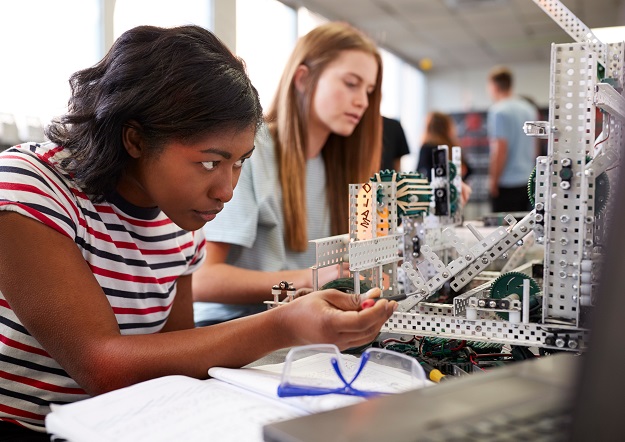
Image credit: ©stock.adobe.com/au/Monkey Business
Australia needs to urgently rethink its approach to encouraging careers in science, technology, engineering and mathematics (STEM) in order to tackle the growing national skills crisis.
That’s the case made by a major new report produced by the Australian Academy of Technological Sciences and Engineering (ATSE), Our STEM Skilled Future: An Education Roadmap for an Innovative Workforce.
The report calls for a step change to make crucial STEM skills accessible, attainable, and aspirational to all Australians, in the face of major challenges to skilled migration, coupled with rapid business digitisation and decarbonisation.
“Australia needs 100,000 more digitally skilled workers and 40,000 more engineers in the next two years alone,” ATSE Chief Executive Office, Kylie Walker.
“We need decisive action to attract and retain the workforce Australia needs to become a STEM-empowered force on the global stage.”
“To realise this, we need a common language for our workers and organisations to communicate the skills they have, want or need.
“Every sector has its own language, and without a comprehensive skills taxonomy, it’s challenging to have rapid vocational mobility where STEM skills are in high demand, such as engineering jobs.”
Walker says the report also illuminates the need to evaluate Australia’s proliferating STEM education resources and programs.
“Businesses and time-poor educators are currently navigating with no compass – ATSE wants to see a self-assessment and quality framework to ensure STEM education programs are value-for-money and fit for purpose,” Walker said.
The report — which draws on the expertise of over 400 experts across sectors and disciplines as diverse as mathematics, agriculture, digital skills, engineering and entrepreneurship — calls for all levels of government, industry, unions, peak bodies, educators, and individuals to collaborate and urgently support life-long learning initiatives.
“With rapid technological progress and constantly evolving tech careers, cementing a culture of lifelong STEM learning will help our workforce to retrain and upskill. The government can help motivate this transformation by investing in workplace learning incentives for businesses focused on priority STEM skills,” said Walker.
The report also found that increasing diversity and inclusion in the STEM-skilled workforce will be a critical enabler to move the needle on workforce shortages and tackle capacity and capability gaps.
“Equal representation is still lacking in STEM careers, particularly for women, Aboriginal and Torres Strait Islander people and those living with disabilities. This can make it hard to imagine a STEM career is attainable,” said Walker.
“Governments, industry and academia have a key role to play by naming and faming diverse role models and supporting quality paid internships that show how STEM can transform our world. We need a mass behaviour change effort to win hearts and minds, with the goal of attracting and retaining STEM professionals.”







